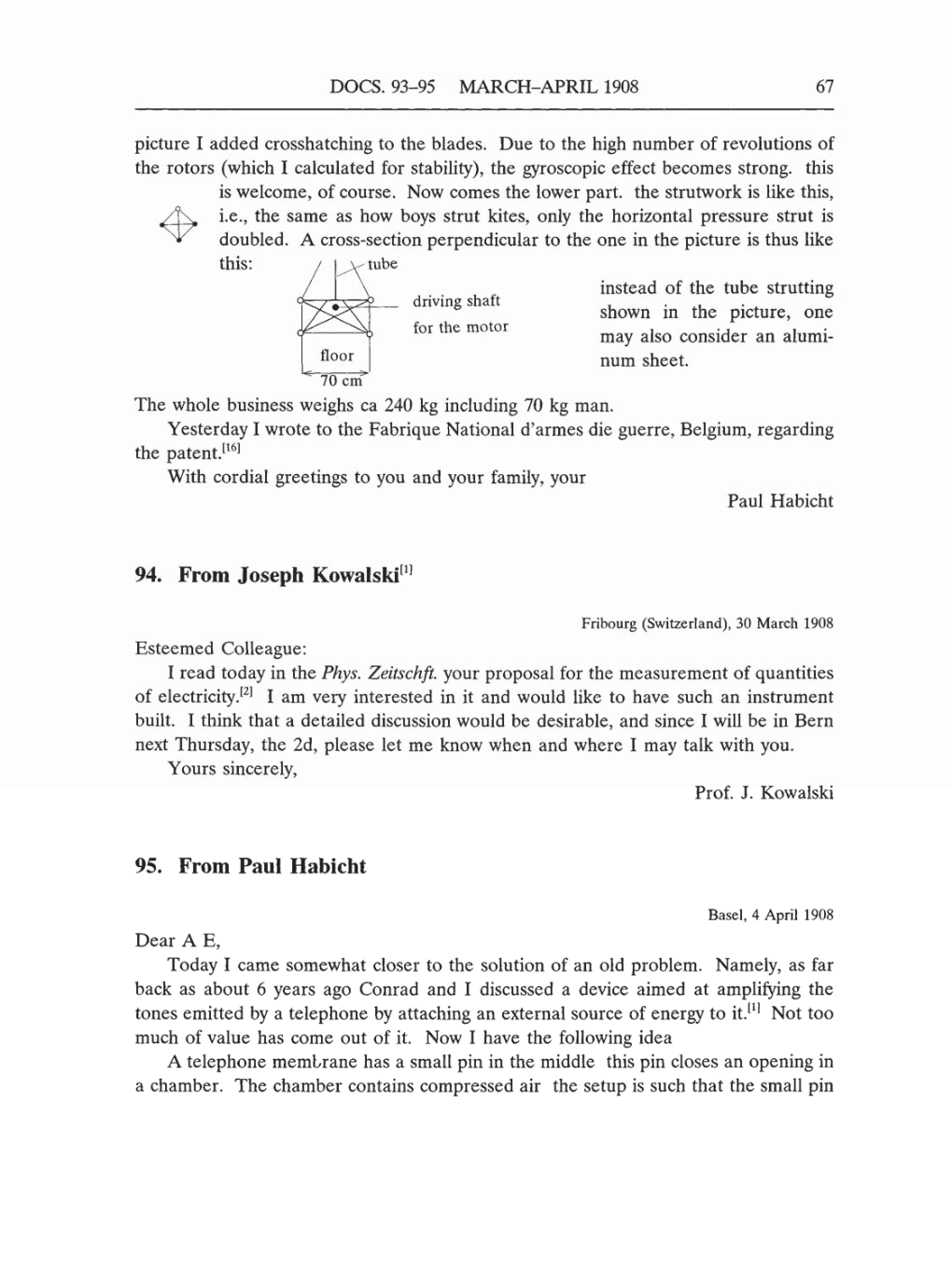DOCS. 93-95
MARCH-APRIL
1908 67
picture
I
added
crosshatching
to
the
blades.
Due
to
the
high
number of revolutions of
the rotors
(which
I
calculated
for
stability),
the
gyroscopic
effect
becomes
strong.
this
is
welcome,
of
course.
Now
comes
the
lower
part.
the strutwork
is
like
this,
i.e.,
the
same as
how
boys
strut
kites,
only
the
horizontal
pressure
strut is
doubled.
A cross-section
perpendicular
to
the
one
in
the
picture is
thus
like
this:
tube
driving
shaft
for
the
motor
floor
instead of the tube
strutting
shown in
the
picture,
one
may
also
consider
an
alumi-
num
sheet.
70
cm
The
whole business
weighs
ca
240
kg including
70
kg
man.
Yesterday
I wrote to
the
Fabrique
National d'armes
die
guerre,
Belgium,
regarding
the
patent.[16]
With
cordial
greetings
to
you
and
your family, your
Paul Habicht
94.
From
Joseph Kowalski[1]
Fribourg (Switzerland),
30 March 1908
Esteemed
Colleague:
I
read
today
in
the
Phys. Zeitschft.
your proposal
for the measurement
of
quantities
of
electricity.[2]
I
am
very
interested
in it and would like
to
have such
an
instrument
built.
I
think that
a
detailed
discussion would be desirable,
and
since I will be in
Bern
next
Thursday,
the
2d,
please
let
me
know
when
and
where
I
may
talk
with
you.
Yours
sincerely,
Prof. J. Kowalski
95.
From Paul Habicht
Basel,
4
April
1908
Dear A
E,
Today I
came
somewhat
closer
to
the solution of
an
old
problem.
Namely,
as
far
back
as
about
6 years
ago
Conrad
and I discussed
a
device aimed at
amplifying
the
tones
emitted
by a
telephone
by
attaching
an
external
source
of
energy
to
it.[1]
Not
too
much of
value
has
come
out
of
it.
Now
I
have
the
following
idea
A
telephone
membrane
has
a
small
pin
in the middle this
pin
closes
an
opening
in
a
chamber.
The chamber contains
compressed
air the
setup
is
such
that the
small
pin
